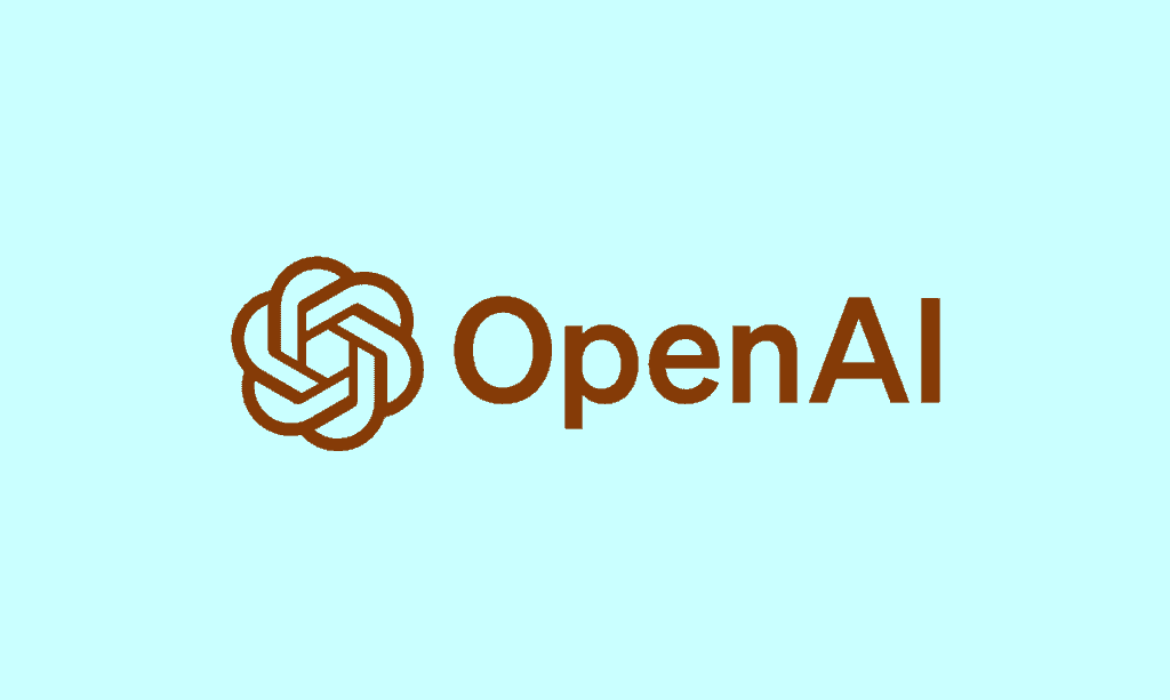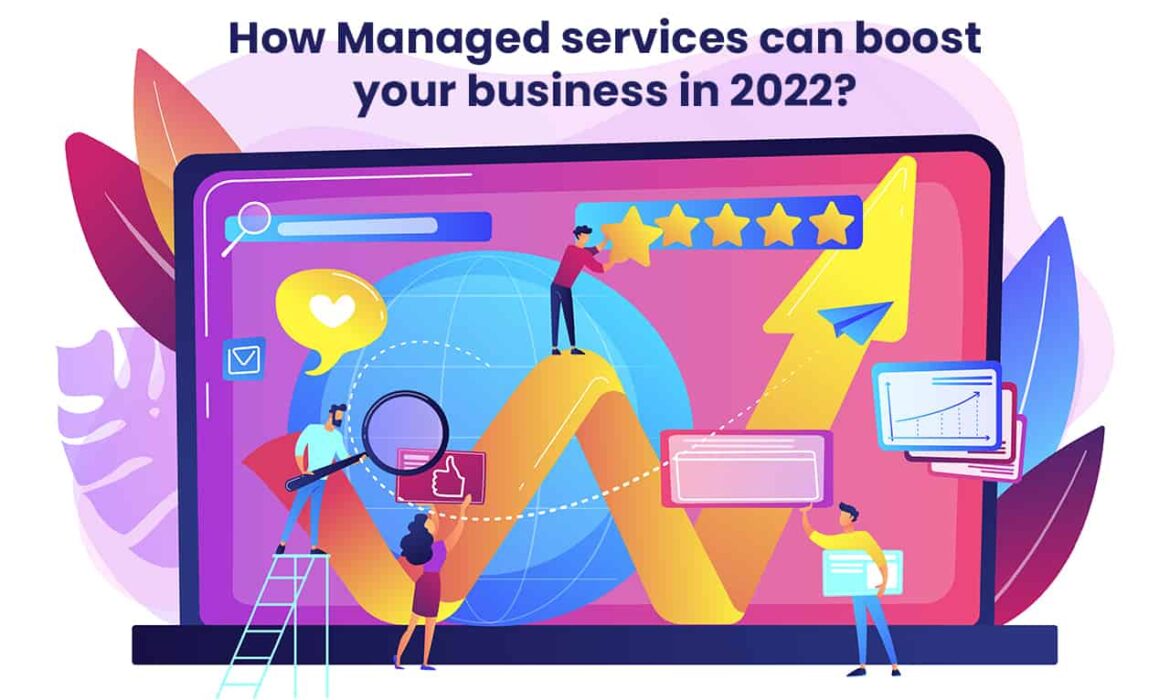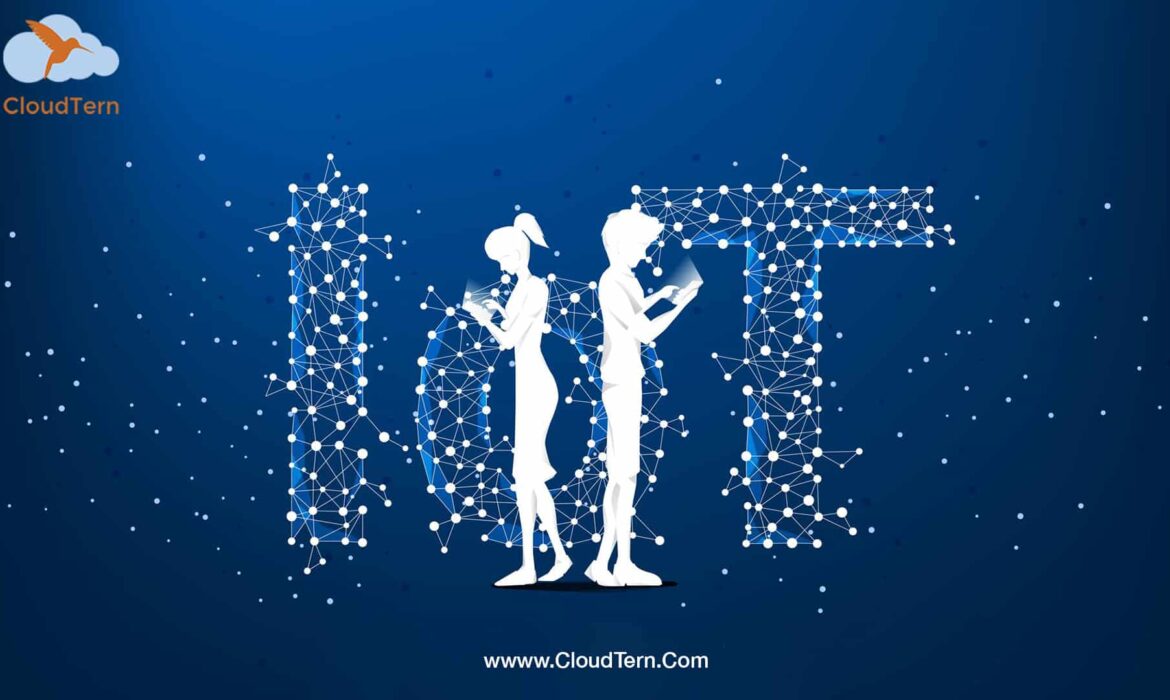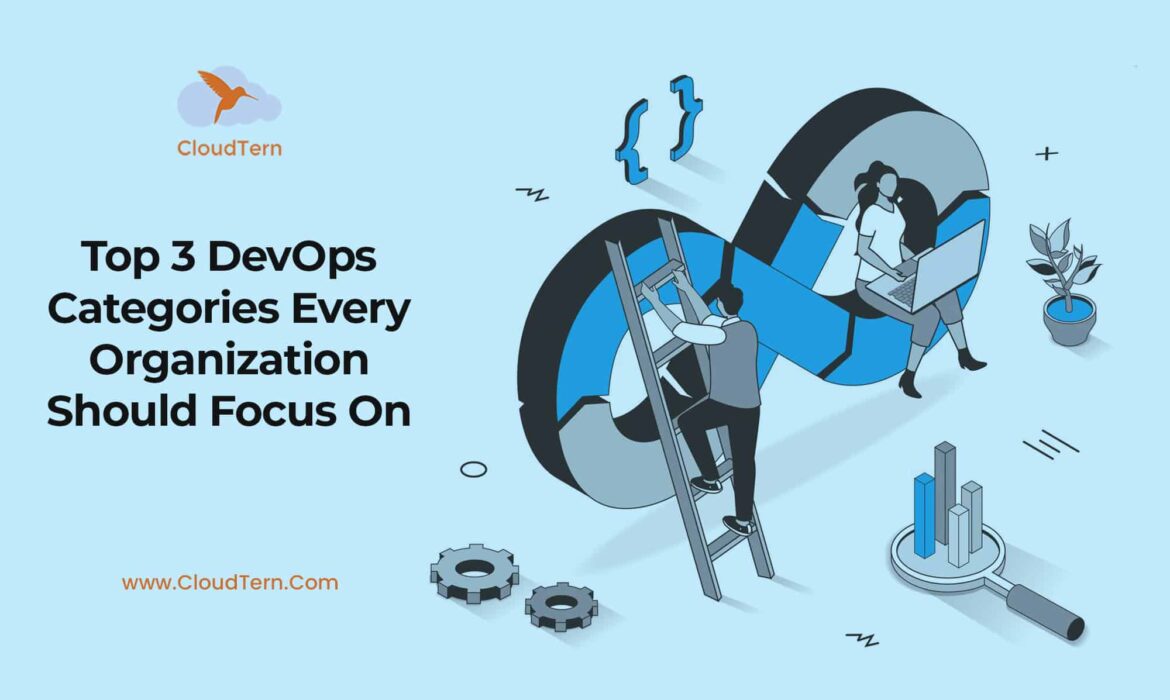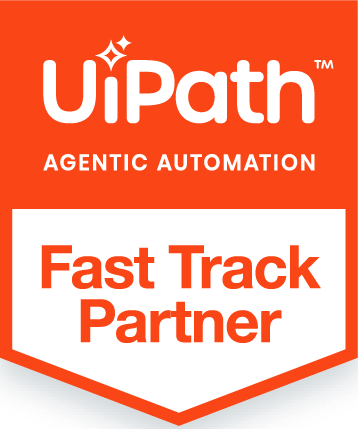Everything About the Updates : OpenAI_DevDay
Amidst the technological breakthroughs, OpenAI’s ChatGPT, built on the foundation of GPT-3.5, stands as a landmark in natural language processing. Introduced by OpenAI, it represents a progression from earlier models, showcasing advancements in deep learning and artificial intelligence. ChatGPT underwent iterative improvements, with valuable user feedback received during beta testing, reflecting OpenAI’s dedication to advancing conversational AI capabilities.Operating on a transformer neural network architecture, GPT-3.5 powers ChatGPT, employing unsupervised learning from diverse internet text to generate human-like responses. Trained to grasp patterns, context, and language nuances, it utilizes attention mechanisms for coherent text generation based on input prompts, establishing itself as a formidable conversational AI. Recently, ChatGPT for GPT-4 integrated voice and vision capabilities, including the cutting-edge DALL-E3 image model, a significant leap in visual processing. For enterprise users, ChatGPT Enterprise offers high-end features, ensuring security, expedited GPT-4 access, extended context windows, and tailored enhancements for professional settings, providing a secure, efficient, and feature-rich experience.
With a user base surpassing 2 million developers integrating ChatGPT across diverse applications, the platform records over 100 million weekly active users. Recognizing ChatGPT’s pivotal role in these users’ endeavors, maintaining their loyalty becomes a paramount business objective. This requires a proactive stance to identify and address any shortcomings, placing a central emphasis on elevating user satisfaction. Aligned with the need for ongoing information updates, this strategy acknowledges the evolving expectations of users over time. The unwavering commitment to this continuous improvement process underscores the platform’s dedication to remaining responsive to user needs within a dynamic environment.
What are the updates now?
Throughout its history of model launches, OpenAI has consistently prioritized exclusivity for developers. The newest addition to their lineup, GPT-4 Turbo, comes with six notable upgrades. This latest industry-driven model marks a significant leap forward in AI capabilities, introducing a host of advancements that redefine the landscape. Positioned as a more intelligent iteration in comparison to GPT-4, GPT-4 Turbo distinguishes itself with a range of key features.
Extended Context Length: With an impressive context length of 128,000 tokens, GPT-4 Turbo ensures heightened accuracy, staying up-to-date with information until its knowledge cutoff in April 2023.
Text-to-Speech Model: A new addition allows the generation of remarkably natural audio from text via API, offering six preset voices for users to choose from.
Custom Models: OpenAI collaborates closely with companies to develop exceptional custom models, facilitating diverse use cases through specialized tools.
Token Doubling: GPT-4 Turbo doubles the tokens per minute for all customers, making it easier to achieve more. Users can also request changes to raid limits and quotas directly in their API account settings.
Enhanced Control: Simplified JSON mode API calls empower developers to make multiple calls at once for reproducible outputs.
Improved World Knowledge: GPT-4 Turbo integrates advanced retrieval capabilities, enabling users to import knowledge from external documents or databases and mitigating concerns about outdated information.
New Modalities: Introducing DALL-E 3, GPT-4 Turbo seamlessly integrates vision and a new text-to-speech model into its API. This enables image inputs, generating captions, classifications, and analyses in six different modes, including Whisper v3.
Customization Boom: Building on the success of fine-tuning in GPT-3.5, GPT builders expand to 16k versions, empowering users to create custom models through specialized tools and a tailored RL post-training process.
Higher Rate Limits: GPT-4 Turbo boasts doubled rate limits, enhancing efficiency and responsiveness. This comprehensive suite of improvements establishes GPT-4 Turbo as a transformative force in the realm of artificial intelligence.
Copyright Shield
OpenAI staunchly supports its customers by covering the expenses incurred in legal claims related to copyright infringement, a policy applicable to both ChatGPT Enterprise and API. Despite its advanced capabilities, this model proves to be significantly more cost-effective than GPT-4, with a threefold reduction in input prompt token costs and a twofold decrease in output token costs.
In our pioneering GPT builder business model, customer protection takes center stage as we bear the legal claim defense costs. Our public and private Chat GPTs establish an industry benchmark, finely calibrated for optimal performance. They seamlessly integrate precise instructions, extensive knowledge, and swift actions, delivering an unparalleled user experience. This forward-thinking approach not only safeguards our customers but also harnesses cutting-edge AI technology to ensure efficiency and reliability. We are not merely redefining customer support; we are revolutionizing it, driven by a commitment to excellence and innovative technological solutions.
Does ChatGPT truly oppose Prompt Engineering?
Indeed, ChatGPT doesn’t possess an inherent opposition to prompt engineering; rather, it acknowledges the existence of this practice and the potential influence it can exert on the model’s behavior. OpenAI, the entity responsible for ChatGPT, appreciates the user community’s interest and creativity in experimenting with prompt engineering.
However, OpenAI emphasizes the importance of responsible usage, cautioning against manipulating the system in ways that could generate unsafe or biased outputs. The organization strives to strike a delicate balance between granting users the ability to customize their interactions and ensuring ethical, unbiased, and secure AI experiences.
In this pursuit of balance, OpenAI actively seeks user feedback, recognizing it as a valuable tool for refining the system. By consistently refining the model, OpenAI aims to enhance its behavior, address concerns arising from prompt engineering, and ultimately provide users with a more reliable and responsible AI tool. This collaborative approach underscores OpenAI’s commitment to fostering a community-driven, ethically sound environment for AI development and interaction.
Introducing GPTs: Understanding the potential of GPTs
Enthusiasts are crafting live AI commentators for video games such as League of Legends. In another scenario, a yoga instructor is leveraging image processing through their webcam, employing GPTbuilder to guide and provide real-time feedback during training sessions.
Moreover, GPTs are being employed to create stickers, forming an impressive and dynamic collection used in real-time. GPTs can also generate prompts for specific instructions when utilizing a custom model. Users have the ability to pre-sets a single assistant for a dedicated use case.
Furthermore, the visual capabilities of GPT, coupled with the Text-to-Speech (TTS) API, are harnessed for processing and narrating videos. This integration allows for a seamless blend of GPT’s visual prowess and audio narration, enhancing the overall video experience.
Custom Models
In the realm of GPT Custom models, users have the power to provide tailored instructions. By incorporating conversation starters such as Code interpreter, Web browsing, and DALL-E-3 for image generation, individuals can shape the assistant’s actions. Additionally, users can select specific functionalities within the assistant and have the option to store API data in long-term memory.
Moreover, users are granted the ability to seamlessly integrate external applications into the ChatGPT web interface. This empowers them to construct their own GPT extensions. Furthermore, envision an extension to this capability where multiple GPTs interact with one another. The possibilities are boundless, marking a significant stride towards mass adoption. Over time, the tangible results of this evolution are poised to become increasingly evident.
Summary and Reflection
In the wake of its recent updates, OpenAI is earning widespread acclaim and recognition for the substantial contributions it has made to the technological landscape. This recognition is particularly pronounced among users and, notably, resonates strongly within the developer community. The enhancements and innovations introduced by OpenAI are being hailed for their positive impact, exemplifying the organization’s unwavering commitment to advancing technology and addressing the evolving needs of its user base. This sentiment is especially pronounced among those actively engaged in software development.
The positive reception underscores OpenAI’s influential role as a trailblazer in the field, highlighting its dedication to pushing the boundaries of what is possible in technology. The acknowledgement and applause from the tech community serve as a testament to the effectiveness and relevance of OpenAI’s efforts, further solidifying its position as a leading force in shaping the future of artificial intelligence and related technologies.
“What makes Generative AI the top choice?”
History
Generative AI boasts a history that traces back to the mid-20th century. Initial forays in the 1950s and 60s focused on rule-based systems for text generation. However, a significant leap occurred in the 2010s with the emergence of deep learning. Milestones like the introduction of recurrent neural networks (RNNs) and the breakthrough of long short-term memory (LSTM) networks in 2014 propelled generative AI forward. The release of GPT-3 in 2020 represented a pivotal moment, showcasing increasingly sophisticated models capable of producing human-like text. This revolutionized natural language processing and creative content generation. One sterling example of generative AI’s prowess is OpenAI’s DALL·E. This cutting-edge model crafts images based on textual descriptions, showcasing AI’s ability to generate realistic, novel content. DALL·E underscores OpenAI’s commitment to pushing the boundaries of artificial intelligence, unlocking new creative avenues, and fundamentally reshaping how we interact with and generate visual content in the digital realm.
Mechanism
Generative AI, as demonstrated by GPT-3.5, operates through a sophisticated mechanism encompassing two key phases: training and inference. During the training phase, the model is exposed to an extensive and diverse dataset of text, which it uses to adjust its internal parameters and weights. This process enables it to grasp the intricacies of language, encompassing grammar, semantics, and context. By analyzing vast text samples, the model learns to recognize patterns, associations, and relationships between words and phrases, thereby acquiring a comprehensive understanding of language structure.
In the inference phase, the AI applies its learned knowledge to generate text. When provided with an initial prompt, it predicts the most likely next word or sequence of words based on the context established by the prompt and its internal knowledge. This interplay between training and inference is a dynamic and iterative process that empowers generative AI to produce coherent and contextually relevant content. As a result, it can mimic human-like text generation across a wide range of applications, from natural language understanding to creative content creation and more.
Limitations in its mechanism
Generative AI, while powerful, has notable limitations while producing content.
- It can produce biased or offensive content, reflecting biases in the training data. It may lack creativity, often producing content that mimics existing data. Ethical concerns arise due to its potential to generate deep fakes and misinformation.
- It requires substantial computational resources, limiting accessibility. Long input prompts can lead to incomplete or irrelevant outputs. The models might not fully understand context and produce contextually inaccurate responses.
- Privacy issues may arise when using sensitive or personal data in generative AI applications, necessitating careful handling of information.
Applications
Natural Language Generation (NLG) Generative AI excels at crafting human-like text, automating content creation for news articles, reports, marketing materials, and chatbots. This ensures consistent, high-volume content production.
Computer-Generated Imagery (CGI) Within the realms of entertainment and advertising, generative AI generates realistic graphics and animations, reducing the need for labor-intensive manual design and enabling cost-effective special effects.
Art and Design Artists leverage AI for creating unique artworks, while designers use it for layout recommendations and logo generation, streamlining the creative process.
Healthcare With Generative AI, doctors can instantly access a patient’s complete medical history without the need to sift through scattered notes, faxes, and electronic health records. They can simply ask questions like, ‘What medications has this patient taken in the last 12 months?’ and receive precise, time-saving answers at their fingertips.
Autonomous Systems In self-driving vehicles and drones, AI generates real-time decisions based on sensory input, ensuring safe and efficient navigation.
Content Translation AI bridges language gaps by translating text and speech, facilitating cross-cultural communication and expanding global business opportunities.
Simulation AI generates realistic simulations for training pilots, doctors, and other professionals, providing a safe and effective environment for skill development.
Generative AI is revolutionizing diverse fields by streamlining operations, reducing costs, and enhancing the quality and personalization of outcomes.
Challenges
Generative AI has indeed transformed from a science fiction concept into a practical and accessible technology, opening up a world of possibilities. Yet, it does come with its set of challenges, albeit ones that can be managed with the right approach.
Ethical Concerns The primary challenge revolves around the ethical use of generative AI, which can produce misleading content like deepfake videos. Developers and organizations are actively working to establish ethical guidelines and safeguards to ensure responsible AI application and adherence to ethical standards.
Bias in Generated Content Generative AI models, trained on extensive datasets, can inherent biases present in the data, potentially leading to generated content that reinforces stereotypes or discrimination. To combat this issue, researchers are dedicated to devising techniques for bias reduction in AI models and advocating for more inclusive and varied training data.
Computational Resources Training and deploying generative AI models, especially large ones, requires substantial computational resources. This can be a barrier to entry for smaller organizations or individuals. Cloud-based services and pre-trained models are helping mitigate this challenge, making generative AI more accessible.
In summary, while generative AI poses challenges, it’s an evolving field with active solutions in progress. Staying informed, following ethical guidelines, and utilizing the expanding toolset enables individuals and organizations to effectively tap into generative AI’s creative potential, pushing digital boundaries.
In a nutshell, Generative AI’s horizon is defined by an unceasing progression in creativity, personalization, and effective problem-solving. Envisage the emergence of ever more intricate AI models effortlessly integrated into our daily routines, catalyzing revolutionary shifts in content creation, healthcare, art, and various other domains. This ongoing transformation is poised to fundamentally redefine our interactions with technology and information, ushering in a future where AI assumes an even more central and transformative role in our daily experiences.
Streamlining Digital Transformation with BPM
While the world is getting digitized in diverse domains, why not business processes? How about transforming any manual or semi-automated business processes into digitized and automated services? Why do so? Across diverse businesses, services typically encompass customer interactions, order processing, supply chain management, and internal workflows. By migrating these processes to digital platforms, organizations gain numerous advantages, including heightened efficiency, fewer errors, enhanced data accuracy, and elevated customer satisfaction.
While a variety of BPM tools exist such as IBM Business Process Manager, Appian, Bizagi, Pega, Camunda, Nintex, Bonita, TIBCO BPM, Oracle BPM Suite, and K2, they offer a streamlined approach to modeling, automating, executing, and monitoring business processes in various sectors. These tools provide a visual representation of processes, allowing stakeholders to collaboratively design and optimize. When it comes to converting traditional processes into digital services, BPM tools prove invaluable. The process to streamline businesses remains consistent with following steps
Process Modeling and Design: BPM tools visually define map processes aiding in spotting inefficiencies. Graphical representation fosters collaboration and communication, enhancing stakeholder understanding.
Automation and Integration: BPM tools integrate diverse systems for end-to-end digital services spanning departments and technologies, while automating manual tasks, boosting speed and consistency minimizing errors.
Data-Driven Insights: BPM tools offer analytics and reporting. Monitoring digital services provides data on performance, bottlenecks, and interactions, enabling informed decisions and improved efficiency, satisfying customers.
Flexibility and Agility: BPM tools foster agility by enabling process modeling, testing, and adjustments. This flexibility aids smooth transitions and optimizations, vital in evolving business environments.
Enhanced Customer Experience: Digitalization enhances customer experiences. Converting processes like orders and support to digital offers quick responses, self-service, personalization, elevating satisfaction and loyalty.
Compliance and Governance: BPM tools enable compliance integration in digital services, embedding regulations, security, and approvals. This guarantees adherence to industry standards and organizational policies during process design.
Key Features Signifying the BPM Tools
Lucidchart: Lucidchart is a visual workspace that bridges the communication gap between business and IT teams in BPM by enabling collaborative process modeling and diagramming.
UML (Uniform Modeling Language): UML is a standardized language for visualizing, designing, and documenting software systems. It’s integral in BPM for precise process representation and analysis.
Flowchart Symbols: Flowcharts use symbols and notations to illustrate processes, aiding in BPM by visually conveying steps, decisions, and workflows.
Data Flow and Control Flow: In BPM, data flow and control flow diagrams depict how data moves and how processes are controlled, enhancing clarity in process understanding.
Data Mining: Data mining techniques within BPM uncover insights from process data, enabling data-driven decisions and continuous improvement.
Business Process Analysis: BPM analyzes existing processes to enhance efficiency or governance. It identifies bottlenecks and inefficiencies, enabling informed process enhancements.
Hyper Automation: Hyper Automation, a BPM approach, combines AI, RPA, and other tools to automate complex processes, boosting efficiency and reducing manual effort.
Six Sigma: Six Sigma methodologies, applied in BPM, streamline processes, minimize defects, and enhance overall process quality, aligning with BPM’s efficiency goals.
Application of BPM Tool in Healthcare Industry
In the healthcare industry, the application of BPM tools holds immense potential to revolutionize business operations, streamline patient care processes, and enhance overall efficiency.
Enhancing Patient Journey:
BPM tools enable healthcare providers to map out and optimize patient journeys, from appointment scheduling to discharge. By visualizing the entire process, identifying bottlenecks, and automating routine tasks, hospitals and clinics can improve patient experience, reduce waiting times, and ensure timely care delivery.
Claim and Billing Management:
Efficient claim processing and billing are paramount for healthcare businesses. BPM tools can automate the end-to-end claim process, from submission to reimbursement, minimizing errors, accelerating claims processing, and ensuring accurate billing, which in turn leads to improved revenue cycle management.
Supply Chain Optimization:
In healthcare, an optimized supply chain is crucial for maintaining inventory levels of medications, medical devices, and equipment. BPM tools streamline procurement, tracking, and distribution processes, preventing shortages, reducing costs, and ensuring essential supplies are readily available.
Patient Onboarding and Engagement:
BPM tools can facilitate seamless patient onboarding, enabling electronic consent forms, electronic health record (EHR) integration, and personalized treatment plans. This enhances patient engagement and enables remote monitoring, fostering a patient-centric approach.
Telemedicine Integration:
As telemedicine gains traction, BPM tools can streamline virtual consultations, appointment scheduling, and prescription issuance. Integration with telehealth platforms ensures efficient communication between healthcare professionals and patients.
Risk Management and Patient Safety:
Identifying and mitigating risks is vital in healthcare. BPM tools enable healthcare businesses to assess risks, implement preventive measures, and track incidents. This proactive approach enhances patient safety and reduces medical errors.
Integrating BPM tools in healthcare enhances operations, betters patient results, and cuts expenses. Automation, compliance, and collaboration enable agile navigation through the intricate healthcare ecosystem.
Unleashing the Power of Digital Twins: An Innovation in Telecommunications
Why unleash the power of digital twins in telecommunications? In the fast-paced and ever-evolving telecommunications industry, staying ahead of the curve is a constant challenge. However, Digital twins are a technology that is transforming the way of operations and networking massively. With the power to revolutionize telecommunications, digital twins have emerged in the race to deliver seamless connectivity and exceptional user experiences.
In the dynamic realm of telecommunications, digital twins play a crucial role in simulating and monitoring various elements such as network infrastructure, devices, and even customer experiences. By providing real-time visualization and understanding of intricate systems, digital twins empower telecom operators to maximize network performance, swiftly address issues, and proactively predict potential failures. The possibilities are truly endless when it comes to leveraging digital twins for an optimized and seamless telecommunications experience. Let’s explore this exciting frontier together!
Digital Twins Mechanism
Every individual component can be created in digital space, the way those components interact with each other in the real world and often the environment they exist in, are digitally replicated. Leveraging the power of artificial intelligence, these digital twins simulate and vividly demonstrate the potential impacts that alterations in design, process time, or conditions would have—without the need to subject real-world objects to those same changes. Simply, it’s like having a digital playground where experimentation and optimization can happen swiftly and intelligently!
Let’s explore an example of a digital twin in the field of telecommunications: Imagine a telecommunications company that operates a vast network of cellular towers and antennas to provide wireless connectivity. They create a digital twin that replicates their entire network infrastructure, including the placement and configuration of towers, antennas, and other critical components.
With this digital twin, the company can continuously monitor and optimize its network’s performance. They can simulate various scenarios, such as changes in user demand, network congestion, or the addition of new towers, to predict how the network will behave under different conditions. These insights enable the company to proactively address network bottlenecks, optimize signal strength, and enhance overall service quality.
Digital twins in telecommunications
Digital twins have limitless potential in the field of telecommunications.
1. Network Planning and Optimization: Telecommunication companies can use digital twins to create virtual replicas of their network infrastructure, including towers, switches, routers, and other equipment. This helps in planning and optimizing network capacity, coverage, and performance. Digital twins can simulate real-time traffic patterns, predict network congestion, and identify areas that require additional infrastructure investment.
2. Predictive Maintenance: Digital twins can monitor the health and performance of telecommunication equipment, such as towers, switches, and routers. By analyzing real-time data from these digital twins, companies can identify potential failures or maintenance needs before they occur. This reduces downtime and increases operational efficiency.
3. Customer Experience Management: Digital twins can be created to represent individual customers or user segments. By analyzing data from these digital twins, telecommunication companies can better understand customer behavior, preferences, and usage patterns. This enables them to offer more personalized services, improve customer satisfaction, and optimize marketing strategies.
4. Service Assurance: Digital twins can provide real-time monitoring and analysis of network performance and service quality. By comparing the actual performance with the digital twin’s expected behavior, companies can quickly detect and resolve service issues, minimizing the impact on customers and ensuring a smooth user experience.
In a nutshell, the digital twins empower telecommunications companies to optimize their network operations, predict and prevent disruptions, boost innovation and productivity, and deliver reliability and efficiency. Isn’t it interesting to unleash the power of digital twins to explore better plan capacity, simulate changes, and ensure optimal performance twins in telecommunications!
Top 3 Advantages of Implementing Chatbot with ChatGPT
Why Chatbot again when ChatGPT is ruling over?! Or why not their combination?! ChatGPT, a revolutionary tool stands for a generative pre-trained transformer which is an interactive platform through chat, designed to give comprehensive answers whereas chatbots are plugins using Natural Language Processes for any business or website to interact with.
Chatbots are typically pre-programmed with a limited set of responses, whereas ChatGPT is capable of generating responses based on the context and tone of the conversation. This makes ChatGPT more personalized and sophisticated than chatbots. Both ChatGPT and chatbots are conversational agents designed to interact with humans through chat giving them real experience. However, there are some them in various factors.
Differences between ChatGPT and Chatbot
Efficiency and speed
Chatbots can handle a high volume of user interactions simultaneously with fast responses. They quickly provide users with information or assist with common queries, reducing wait times which improves overall efficiency. In contrast, ChatGPT generates responses sequentially and has limited scalability for handling large user bases.
Task-specific expertise
Chatbots can be built with specialized knowledge or skills for specific industries or domains. For instance, a chatbot in healthcare can provide accurate medical advice or help schedule appointments, leveraging its deep understanding of medical protocols. ChatGPT, while versatile, may not possess such specialized knowledge without additional training.
Control over responses while user interaction
Chatbots offer businesses more control over the responses and images they want to project. As a developer, you can design, curate, and review the responses generated by a chatbot, ensuring they align with your brand voice and guidelines. ChatGPT, although highly advanced, generates responses based on a large dataset and may occasionally produce outputs that are off-topic or not in line with your desires.
Improved conversational capabilities
Integrating ChatGPT into a chatbot, can leverage its advanced natural language processing abilities. ChatGPT excels at understanding context, generating coherent and human-like responses, and handling more nuanced conversations. This can enhance the overall conversational experience for users interacting with the chatbot.
Advantages Chabot with ChatGPT
Richer and more engaging interactions
ChatGPT’s ability to understand and generate natural language responses can make the interactions with the chatbot feel more realistic and engaging. The chatbot can provide personalized and contextually relevant responses, leading to a more satisfying user experience.
Continuous learning and improvement
ChatGPT is designed to learn from user interactions, allowing it to improve its responses over time. Integrating ChatGPT with a chatbot enables the system to continuously learn and adapt based on user feedback. This means that the chatbot can become smarter and more effective at understanding and addressing user needs.
Flexibility and scalability
ChatGPT can be integrated with various chatbot platforms and frameworks, offering flexibility in implementation. ChatGPT is constantly learning, which means that it can improve its responses over time by building a chatbot for customer support, virtual assistants, or other applications.
Integration of ChatGPT into the back end of the chatbot requires to implementation of their combination. Whenever a user enters a message, the chatbot would pass that message to ChatGPT, which would generate a response based on its machine-learning algorithms using the cloud services. The chatbot would then display the response to the user. This approach can result in a more natural and intuitive conversation between the user and the chatbot, as ChatGPT is capable of generating responses that are more human-like.
In summary, ChatGPT is a more advanced and intuitive conversational AI, it may not always have access to real-time data or provide the most up-to-date information on rapidly changing events than traditional chatbots. But it is capable of understanding the nuances of human language, context, and intent, which makes it a more effective tool for customer service, personal assistants, and other applications while generating responses to user input, while the chatbot serves as the interface through which users can interact with the system.
How the Cloud is Changing the Hospitality Industry?

cloud services for hospitality
Right from the first hotel reservation system “HotelType’ introduced in 1947 and the first automated electronic reservation system ‘Reservatron’ in 1958 to today’s AI-based platforms, hospitality technology has come a long way. While the industry was a bit late to adopt the cloud, it is quickly catching up with others in recent times.
The hospitality industry revenues are increasing at a rapid pace. According to Global Hospitality Report, the industry earned a revenue of $3,952.87 billion in 2021. This value is expected to reach $4,548.42 billion by the end of 2022, growing at a CAGR of 15.1% during the period 2021-2022. The smart hospitality market was valued at $10.81 billion in 2020. This value is expected to reach $65.18 billion by 2027, growing at a CAGR of 25.1% between 2021 and 2027, as reported by Market Data Forecast.
The hospitality industry is aggressively embracing cloud solutions in recent times. Here are a few reasons that are driving this adoption.
Mobility Solutions
‘Mobility solutions’ is a key aspect of cloud services. This is what the hospitality industry needs the most as its target audience comes from different parts of the globe. With a cloud-based hospitality platform, customers from any location and device can easily search for room availability, check out the available amenities and make convenient travel bookings from the comfort of their homes.
Unlimited Scalability of Operations On-demand
The hospitality industry is a special industry wherein traffic spikes are dynamic. During the off-season, the traffic is minimal while peak seasons bring a gold rush. For instance, Spring Flower Fest is conducted on the 31st of May every year at Callaway Gardens in Georgia. During this time, hotels and resorts receive a huge number of visitors. It is difficult for traditional software to handle this abnormal traffic spike. However, scalability is the key feature of cloud technology. Regardless of the size and nature of the traffic, hotel and resort management can seamlessly scale operations on-demand and only pay for the resource used.
Deliver Superior Customer Experience
Personalization is key to delivering a superior customer experience. The hospitality industry is no different. Today, customers are not just looking to spend a night in a hotel room but they expect something more. Cloud solutions augmented with AI analytics help organizations identify customer preferences, purchasing trends and browsing behaviours to offer personalized and customized offers. Be it about a special recipe, spa session or a visit to an amazing holiday spot and arranging the best travel option, customers will enjoy a convenient and exciting stay when they get much more than a hotel stay experience.
Seamless Integration across the Supply Chain
Traditional software doesn’t allow you to add new features that are not available with the vendor or integrate with other platforms. However, cloud solutions can be easily integrated with any platform across the supply chain. As such, organizations can quickly add/modify travel packages and seamlessly move between different vendors to offer customized offers to customers.
Automation everywhere
With automation incorporated across the business operations, hospitality institutions can concentrate on delivering a superior customer experience instead of worrying about property management.
Optimized Costs
In a traditional software environment, the hotel management has to invest heavily in the hotel management software licenses, and maintenance and then frequently update it. Cloud solutions come with a pay-per-use subscription model. It means you only pay for the resources used. There is no heavy upfront payment. During a peak season, the platform automatically scales up and down to meet traffic spikes. As such, operational costs are significantly optimized.
Simplified IT Management
While the technology improves the efficiency of hospitality operations, the industry doesn’t have the expert staff and required IT budgets to manage IT operations. Cloud solutions not only optimize costs but also simplify IT management. As the cloud provider handles the infrastructure management, software maintenance and updates, organizations are released from this burden. As such, they can deliver a superior customer experience while identifying ways to increase revenues.
How Managed services can boost your business in 2022?
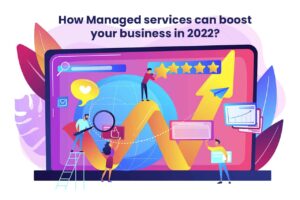
Managed Network Services
The Covid-19 pandemic that forced a sudden lockdown across the globe expedited the digitalization of business operations and remote networks. This trend resulted in search for qualified IT professionals and the best technologies and services. While the dearth of qualified IT professionals posed a big challenge, dynamically changing technologies forced organizations to frequently update/change skillset and toolstack requirements. After going through the tedious hiring process that is burdened with insurance, labour laws and other perks, you don’t want to see a change in the technology that requires a different set of skills. This is where managed services come to the rescue.
Managed services is about outsourcing regular business operations to a 3rd party that has competence, skilled professionals and the right tool stack in a specific vertical. With access to a dedicated IT team 24/7, organizations can seamless perform business core operations without worrying about technical issues.
While every IT-related service can be outsourced, the most common managed services include managed software services, managed cloud services, managed network services etc.
Managed Cloud Infrastructure
Adapting cloud-native platforms is a key IT trend in 2022. Modern cloud-native architectures comprise container clusters deployed at rapid speeds. With dynamically changing infrastructure configurations, it is a challenge for administrators to keep a tab on change management. Infrastructure as Code (IaC) is a popular technology trend that is gaining momentum in 2022. Using IaC tools such as Terraform and CloudFormation, organisations can define infrastructure as code and thereby convert infrastructure into software. As such, software development best practices can be applied to infrastructure as well. With IaC and automation, organizations can seamlessly deploy and manage infrastructure resource provisioning. While all this looks good on paper, it requires expert knowledge to leverage this trend. MSPs possess these capabilities to keep you ahead of the competition.
Managed Network Services Leveraging 5G Technology
5G technology is becoming mainstream in 2022. The 5G technology enables organizations to virtualize software-defined networks and run them on commodity hardware. Each network function can be virtualized and packaged into a container As such, organizations can develop services as network functions and package them into containers. Container clusters are managed by container orchestration tools such as Kubernetes. Instead of investing heavily in infrastructure and IT professionals, organizations can outsource telecommunication services to an MSP to save costs while significantly improving operational efficiencies.
Leveraging IoT Networks
The rapidly evolving IoT technology boosted by the cloud, AI and 5G advancements provides a great opportunity for telecoms to create and manage IoT networks accommodating thousands of devices that communicate with higher speeds, lower latencies and are energy efficient. As telecoms possess the required infrastructure, they can easily leverage the 5G network capabilities. As 5G is still in the nascent stage and there are limited options in the form of customizing public IoT cloud or building an IoT platform from scratch, not many organizations have the required expertise and skillsets to optimize this technology. This is where MSPs can take over.
Managed Software Services
Software as a Service (SaaS) is a popular deployment model of cloud services where the software is hosted by the provider and delivered to the client over the Internet via a pay-per-use subscription model. Despite SaaS is an easy to use model, organizations use hundreds of tools and services that lack centralized management. Security and network configurations should be taken care of. Managed software services take this service to the next level by adding hardware and networking support. As such, organizations enjoy higher scalability, stability, predictability and security while optimizing cloud costs. For organizations that develop custom software, MSPs help you throughout the software application lifecycle.
The Bottom Line
Managed service providers bring a large plate of benefits to the table. Firstly, MSPs eliminate the need to install, configure and manage robust infrastructure containing a lot of moving parts. By placing the infrastructure responsibilities on the MSP, you can save huge costs as well as precious time. Secondly, MSPs offer the best tool stack that is always updated. As such, you can work with world-class technologies and compete with large enterprises without shelling out huge money.
IoT for Telecommunications
 The telecommunication sector is going through a tricky phase right now. The advent of the 5G technology augmented with the software-defined virtual networks is disrupting the industry on one side, opening a new landscape of opportunities. On the other side, there is tough competition from VoIP-based platforms such as Skype and Zoom. With an increased commoditization, telecoms are able to cut prices and stay in the competition. However, they had to take a hit on the Average Revenue per User (ARPU). Another important challenge is customer churn. With shrinking IT budgets and high competition, customer retention becomes a challenge for most telecoms. This is where IoT comes to the rescue.
The telecommunication sector is going through a tricky phase right now. The advent of the 5G technology augmented with the software-defined virtual networks is disrupting the industry on one side, opening a new landscape of opportunities. On the other side, there is tough competition from VoIP-based platforms such as Skype and Zoom. With an increased commoditization, telecoms are able to cut prices and stay in the competition. However, they had to take a hit on the Average Revenue per User (ARPU). Another important challenge is customer churn. With shrinking IT budgets and high competition, customer retention becomes a challenge for most telecoms. This is where IoT comes to the rescue.
How does IoT help Telecom Companies?
IoT technology is rapidly evolving. Telecoms can take full advantage of IoT networks as they already possess the infrastructure in the form of mobile phone towers and internet cables. When 5G is added to it, telecoms can build high-speed networks with low latency and accommodate a wide range of IoT devices wherein seamless connection is established between interconnected devices and people in the massive ecosystem. Telecoms can build IoT platforms that enable customers to connect and manage multiple endpoints and run IoT apps while managing the infrastructure from a central dashboard.
IoT with 5G offer high-speed networks with expanded bandwidths and low latencies to run real-time processes. Energy efficiency is a big advantage as companies can run millions of connected devices with minimal power consumption. With an IoT platform, telecoms can reduce churn while gaining new customers to increase revenues. Moreover, they can create new job opportunities and thereby contribute to the growth of the local economy as well.
IoT Use Cases for Telecom
While the basic functionality of IoT for telecoms is to provide connectivity services for the customer IoT devices, the use cases can be extended to industry-specific end-user apps as well.
IoT in home automation enables customers to control electronic devices at home using mobile apps or voice assistants.
Remote Asset Monitoring of physical assets such as orders, vehicles, patients etc. using a mobile application in real-time, benefitting healthcare, retail, logistics and several other industries.
Telecoms can perform Data Storage and Management (backend processes) for client applications.
Data Analytics services comprising storage of IoT-generated data and delivering actionable insights to clients using AI/ML algorithms.
Telecoms can offer cloud-based PaaS and SaaS services wherein clients can use IoT-based platforms to develop, deliver and manage software.
Build smart cities with autonomous vehicle systems
Choosing the Right IoT Platform
As the IoT industry is still in the nascent stage and evolving, telecoms have to either build a custom IoT platform from scratch or customize a public cloud IoT offering. When you choose to build a custom IoT platform, you get the flexibility and feature-set that tightly integrates with your existing infrastructure. However, it is a time consuming and costly affair. In addition to development costs, you should also consider the fact that you need to build and manage your own cloud. Alternatively, telecoms can customize AWS IoT or Azure IoT platforms quickly and reduce initial investment costs. The advantage of public cloud IoT platforms is that you can use extensive network services that are secure and reliable. However, you’ll incur cloud usage costs.
The Bottom-line
Telecoms struggling with increased competition and reduced margins can tap into new revenue streams by exploring IoT capabilities for the telecom industry. Not only can telecoms reduce customer churn but they can expand their services and solutions to gain a competitive edge in the market with IoT solutions.
CloudTern is a leading provider of IoT-based telecom solutions. Be it developing an end-to-end IoT platform or providing IoT consulting services, CloudTern is here to help!
Call us right now to fly high on the IoT plane!
Everything you need to know about Private 5G Networks
 The 5th Generation mobile network, popularly known as 5G, is the new global wireless standard that succeeds the 4G technology. The 5G technology offers high-speed network connectivity with low latency and accommodates a wide range of devices in the network. Today, businesses are aggressively embracing the 5G revolution. However, the majority of businesses are challenged to apply the 5G benefits to operations owing to the exponential growth of digital innovation that is augmented with data-heavy emerging technologies in the form of AI/ML platforms, AR/VR solutions and real-time analytics. The Covid-19 pandemic was a key driver of this digital innovation. This is where private 5G networks make a strong case.
The 5th Generation mobile network, popularly known as 5G, is the new global wireless standard that succeeds the 4G technology. The 5G technology offers high-speed network connectivity with low latency and accommodates a wide range of devices in the network. Today, businesses are aggressively embracing the 5G revolution. However, the majority of businesses are challenged to apply the 5G benefits to operations owing to the exponential growth of digital innovation that is augmented with data-heavy emerging technologies in the form of AI/ML platforms, AR/VR solutions and real-time analytics. The Covid-19 pandemic was a key driver of this digital innovation. This is where private 5G networks make a strong case.
An Overview of Private 5G Network
A private 5G network enables organizations to customize 5G technology to suit business-specific requirements, security and priority access to its wireless spectrum. It replaces the 4G LTE network technology. However, businesses can still use private 5G along with 4G LTE networks as both networks use different frequency bands.
Private 5G networks can be classified into two categories:
Full Private 5G Network: When the network spectrum and network base stations are owned by the organization, that network is called a full private 5G network.
Hybrid Private 5G Network: In this model, the organization share the network infrastructure wherein the network is sliced with different control plane and user plane functionalities.
While both public and private 5G networks replace 4G LTE networks and are similar in most ways, isolation and priority access are two important aspects that differentiate them. Using private 5G networks, operators can partially or fully isolate certain user devices from the mobile network operator’s public networks as a security policy to reduce exposure to public interfaces when sensitive data is involved. When security is not a concern, devices can seamlessly switch between public and private 5G networks. Similarly, operators can configure the private 5G network to categorize activities on the network into different priority levels such that business-critical tasks are served first. Other non-critical tasks can be offloaded from the network or moved to a different network.
Hybrid multi-access edge computing environments are gaining popularity in recent times. MEC environments comprise cloud, mobile and edge computing technologies installed closer to the usage environment allowing applications and their data to operate in close proximity to end-user locations. Private 5G networks support hybrid multi-access edge computing networks and public networks.
Why Private 5G Networks are gaining momentum?
As 5G networks are evolving, organizations have multiple options to leverage private 5G technology. They can acquire spectrum from the following sources:
Licensed wireless providers (Midband or Highband Spectrum)
C-band Auction (Licensed Midband Spectrum)
Citizen Broadband Radio Services (CBRS) Priority Access License (PAL) from 2020 FCC Auction (Licensed Spectrum)
Citizen Broadband Radio Services (CBRS) General Authorized Access (GAA) Tier (Unlicensed Spectrum)
Another driver of private 5G adoption is the software-defined implementation in the form of Network Function Virtualization (NFV) that allows organizations to operate on commodity components instead of expensive and specialized hardware. For instance, Radio Access Network (RAN) functions can run on a commodity server managed by software running on top of it.
Managed Private 5G Networks
With the ability to connect multiple devices and machines with any network across the globe, private 5G networks are creating enormous opportunities for businesses. Today, managed private 5G networks are available as turnkey telecom solutions to businesses of all sizes. For instance, ‘On Site 5G’ is a managed private 5G network combined with AWS Outposts that enables organizations to deliver AWS infrastructure, tools and APIs to any environment. Similarly, AWS Private 5G, Azure Private 5G Core and Cisco Private 5G are a few other examples of fully-managed services for private cellular networks.
The Bottomline
Be it warehouse logistics, manufacturing, education or Energy & Utilities, private 5G networks are already in operation, providing organizations with the required customization and control of their connectivity. Now is the right time to tap into this trend and create new business opportunities.
Don’t worry about the complexities involved in the private 5G networks. CloudTern is here to help. As an experienced telecom solutions company, we help you quickly provision and manage your private 5G network cost-effectively.
Call us right now to join the private 5G network revolution!
Top 3 DevOps Categories Every Organization Should Focus On
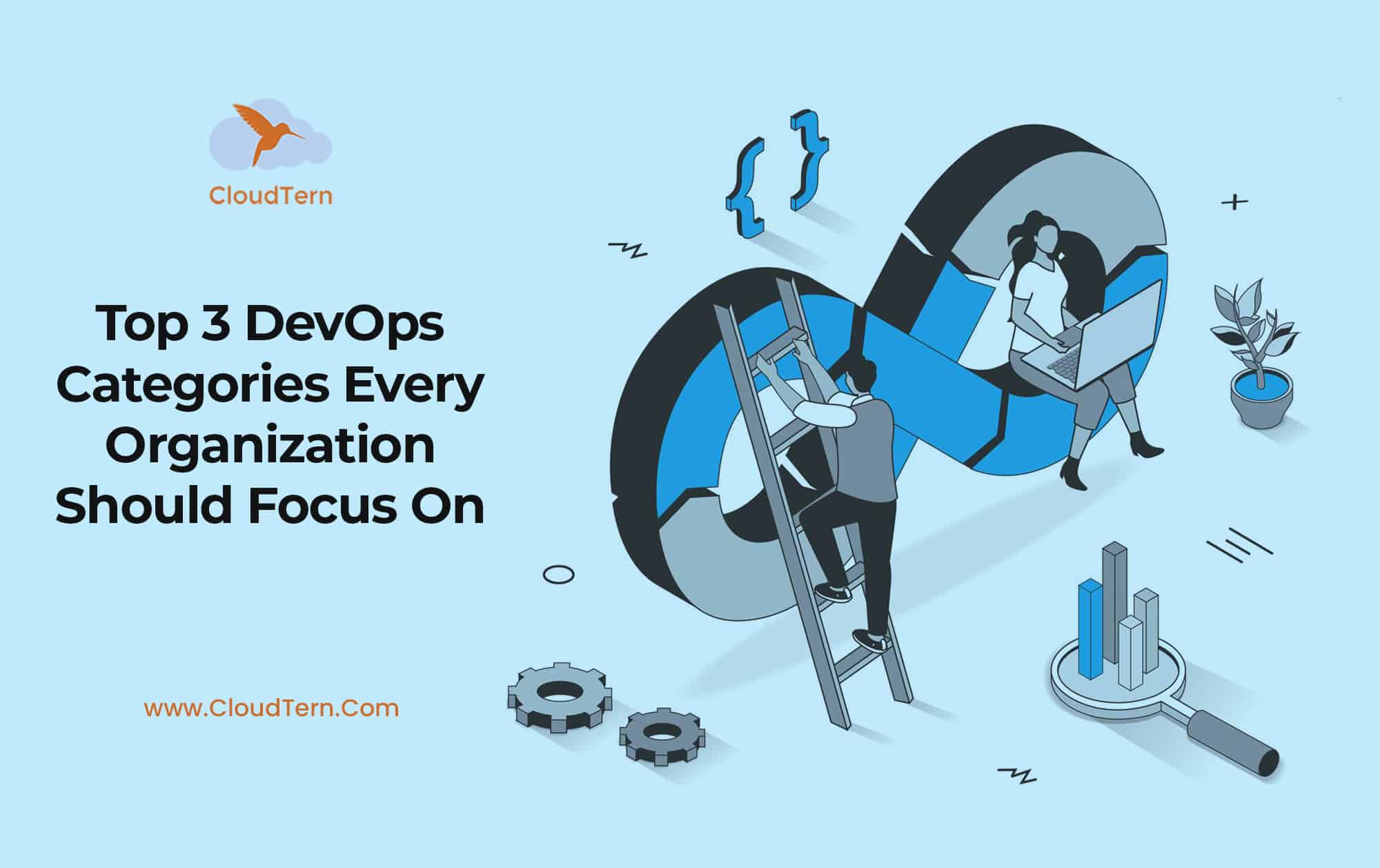
As businesses embrace microservices and cloud-native architectures, DevOps stands at the center, helping businesses efficiently manage IT workloads. DevOps is an innovative methodology that integrates development, operations, security and business teams to seamlessly coordinate and deliver quality products faster and better. From planning and development to delivery and operations, DevOps works right through the entire application lifecycle.
DevOps brings developers and operations together so that the code is automatically build, tested and deployed in a continuous model. It uses a Continuous Integration / Continuous Deployment (CI/CD) pipeline with automation incorporated across the product lifecycle to accelerate the development process and improve efficiencies while reducing costs.
A CI/CD pipeline comprises a series of steps involved in the delivery process of quality software. It includes the following steps:
- Build Phase: The application code is build and compiled here
- Test Phase: The compiled code is tested here
- Release Phase: The code is pushed to the repository
- Deploy Phase: Code is deployed to production
While DevOps offers amazing benefits to IT teams, many organizations fail to leverage it owing to a lack of understanding of this methodology. Understanding different categories of DevOps and implementing the right tool stack is important. Here are 3 important DevOps categories every organization should focus on.
1) Software DevOps
Software DevOps is where the core software is developed. It involves planning the design, assigning tasks to the team and creating artefacts using tools such as coding software, integrated development environment (IDE), version control system, testing framework and issue management.
Integrated Development Environment (IDE): Developers use a text editor to write, debug and edit code. However, an IDE comes with much more features than a text editor offers. Along with an editor, the IDE offers debugging and compilation enabling you to build, test and deploy code from a single dashboard. Choosing the right IDE improves productivity, reduces errors and eases the development process. While choosing an IDE, ensure that it can be integrated with services across the DevOps lifecycle. Visual Studio, IntelliJ and Eclipse are some of the popular IDEs available in the market.
Version Control System: When multiple developers work on a software project, keeping track of code changes becomes a critical requirement. A version control system helps you to keep track of each code change and revert to a specific version when a release crashes. Git is the most popular VCS system. CVS, Mercurial and SVN are other options available in this segment.
Testing Framework: A testing framework offers a set of guidelines to design and run test cases using the best testing tools and practices.
Issue Management: It is a process of identifying system-level conflicts and defects in the workflow based on events or metrics. It involves detection, response, resolution and analysis.
To achieve continuous delivery, it is important to choose the right CI/CD tools and implement automation wherever possible. Here are a few best tools for software DevOps:
Jenkins:
Jenkins is an open-source CI server tool that comes free of cost. It supports Linux, Windows and macOS platforms as well as major programming languages. The main advantage of Jenkins is its plug-in repository. You can find a plugin for most of the development tasks. Moreover, it can be easily integrated with other CI/CD platforms. Debugging is easy. However, it is important to check if the plug-ins are updated. Another downside is the lack of a user-friendly UI. It has a learning curve concerning the installation and configuration of the tool.
Github Actions
Github Actions is a CI/CD platform that enables developers to directly manage workflows in their Github repository. As such, you can perform repository-related tasks in a single place. It offers multiple CI templates. Github Actions comes with 2000 build minutes free per month.
GitLab
GitLab is a CI software developed by GitLab Inc. for managing DevOps environments. It is a web-based repository that enables administrators to perform DevOps tasks such as planning, source code management, operations, monitoring and security while facilitating seamless coordination between various teams through the product lifecycle. This platform was written in Ruby and launched in 2014 as a source code management tool. Within a quick time, it evolved as a platform that covers the entire DevOps product lifecycle. It comes with an open-core license which means the core functionality is open-source and free but additional functionalities come with a proprietary license.
AWS Code Pipeline
AWS CodePipeline is a powerful DevOps product from AWS that enables developers to automate and manage the entire product lifecycle. The tool automatically creates a build, runs the required tests to launch an app whenever a code change is detected. It offers an intuitive GUI dashboard to efficiently monitor and manage workflow configurations within the pipeline. As AWS CodePipeline is tightly integrated with other AWS services such as S3, Lambda or 3rd party services such as Jenkins, it becomes easy to create quality software faster and better. You can simply pull code from S3 and deploy it to Elastic Beanstalk or Codedeploy.
2) Infrastructure DevOps
Infrastructure management is another crucial component of a DevOps environment. With the advent of Infrastructure as Code (IaC), managing the infrastructure became simple, cost-effective and risk-free. Infrastructure as Code is an IT method of provisioning and managing infrastructure resources via config files, treating infrastructure as software. IaC enables administrators and developers to automate resource provisioning instead of manually configuring hardware. Once the hardware is transformed into software, it can be versioned, rollback and reused.
The advent of Ruby on Rails and AWS Elastic Compute Cloud in 2006 enabled businesses to scale cloud resources on-demand. However, the massive growth in web components and frameworks posed severe scalability challenges as administrators struggled to version and manage dynamically changing infrastructure configurations. By treating infrastructure as code, organizations were able to create, deploy and manage infrastructure using the same software tools and best practices. It allowed rapid deployment of applications.
IaC can be implemented using two models namely Declarative Configuration and Imperative configuration. In a declarative approach, the configuration is defined in a declarative model that shows how the infrastructure should be while the Imperative model defines steps to reach the desired state. Terraform and AWS CloudFormation are the two most popular IaC tools that enable organizations to automatically provision infrastructure using code.
Infrastructure as Code took infrastructure management to the next level. Firstly, it rightly fits into the DevOps CI/CD pipeline. The ability to use the same version control system, testing frameworks and other services of the CI/CD pipeline facilitates seamless coordination between various teams and faster time to market while significantly reducing costs. It also helps organizations leverage the containerization technology wherein the underlying infrastructure is abstracted at the OS level, and the hardware and OS are automatically provisioned. As such, containers running on top of it can be seamlessly deployed and moved across a wide variety of environments.
Secondly, IaC offers speed and efficiency with infrastructure automation. It is not confined to compute resources but extends to network, storage, databases and IAM policies as well. The best thing about IaC is that you can automatically terminate resources when they are not in use. Thirdly, IaC reduces operational costs as the number of network and hardware engineers required at every step of operations is reduced. Fourthly, it brings consistency across all deployments as config files use a VCS as a single source of truth. Scalability and availability are improved. Monitoring the performance and identifying issues at a granular level helps reduce downtimes while increasing operational efficiencies. Overall, it improves the efficiency of the entire software development lifecycle.
Terraform
Terraform is an open-source IaC tool developed by Hashicorp in 2014. Written in Go language, Terraform uses Hashicorp Configuration Language (HCL) to define the desired state of the target infrastructure on a variety of platforms including Windows, Solaris, Linux, FreeBSD, macOS and OpenBSD. Terraform is a declarative-based tool that stores the state of the infrastructure using a custom JSON format along with details of which resources should be configured and how. The tool uses ‘Modules’ to abstract infrastructure into sharable and reusable code. HCL is human-readable and helps you quickly build infrastructure code. Terraform is cloud-agnostic and integrates well with AWS. So, it can be used to manage a variety of cloud environments.
AWS CloudFormation
AWS CloudFormation is a managed IaC service from AWS that helps you to create and manage AWS resources using simple text files. Along with JSON template format, YAML is supported. AWS constantly updates the tool to always keep it current while adding several new features regulalry. Nested stacks is a useful feature that encapsulates logical functional areas which makes it easy to manage complex stacks. Similarly, changesets is another useful feature that allows you to inspect changes before applying them. However, CloudFormation is native to AWS. If your infrastructure is AWS-heavy, CloudFormation will serve a great purpose.
3) Database DevOps
DevOps is not just confined to development and operations. Database DevOps extends DevOps capabilities to databases as well, integrating development teams with database administrators (DBAs) such that database code is also included with the software code. As such, database changes can be efficiently monitored and added to the DevOps workflows.
In a traditional development environment, changes made to an application often require changes to be made to the corresponding database. Developers wait for DBAs to make changes to databases that are stored in SQL scripts. These changes have to be reviewed before deploying data to production. As the review is done at the later phase of the workflow, the delay impacts the overall agility and productivity of the project. Errors identified just before a release can be risky and costly as well.
Database DevOps introduces a version control system for database changes. The source control allows you to run builds anytime and roll back if needed at your pace. It also offers an audit trail.
In database DevOps, database workflows are also integrated into the CI/CD pipeline with automation incorporated wherever possible. When a database code change is detected, the system automatically triggers a build. As such, database teams can closely work with other teams on code changes using a well-defined process to improve productivity while reducing task switching.
However, continuous deployment is not easy with regard to databases. When a code change triggers a change to the database schema, it should be migrated to a new structure. You need the right tools to do so. Snowchange is a powerful DevOps database tool that helps you in this regard.
SnowChange
SnowChange is a powerful DevOps database tool developed by James Weakly in 2018 to manage Snowflake objects such as tables, stored procedures and views. Written in Python, Snowchange fits easily into the DevOps CI/CD pipeline as all popular CI/CD tools offer a hosted agent for Python. It is a lightweight tool that follows an imperative approach to DCM (Database migration, schema change and schema migration). It uses a snowchange change script that contains SQL statements defining the state of the database. By looping target databases, the tool applies new changes to the required databases.
Sqitch, Flyway and Liquibase are a few other options in the DevOps database stack.
DevOps is a blanket term that deals with managing an entire product lifecycle. However, it is important to optimize every phase of the DevOps workflow. Choosing the right tool stack for the right process is the key to fully leveraging DevOps.
Confused about various tools, processes and configurations. Not to worry anymore. CloudTern is here to help. As an experienced DevOps company, CloudTern helps you in designing and implementing the right tool stack for your DevOps projects.
Call us right now to master DevOps!

